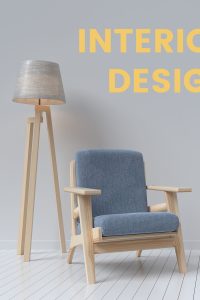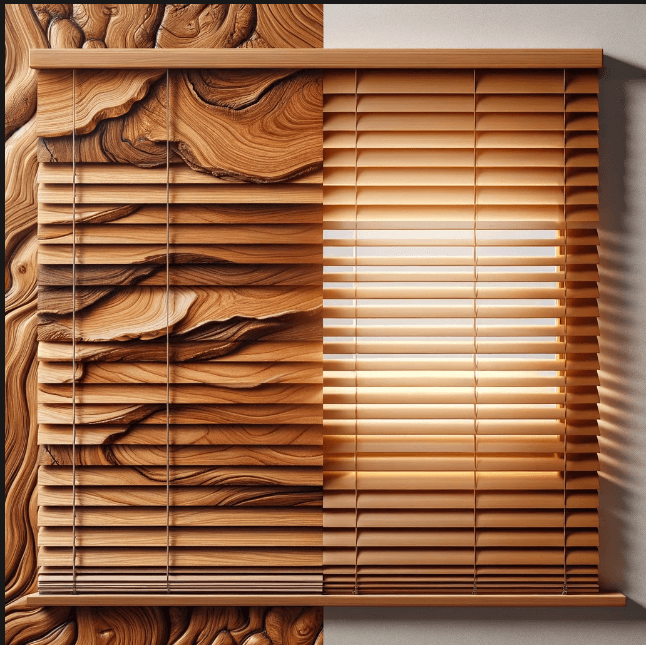Denver, often called the “Mile High City,” is the capital and largest city of Colorado, USA. Nestled at exactly one mile (5,280 feet) above sea level, Denver boasts a vibrant cultural scene, stunning mountain views, and a thriving outdoor recreation culture, making it a popular destination for both residents and tourists alike. When it comes to enhancing the aesthetics and functionality of your home, selecting the right window treatments is crucial. Denver residents looking to enhance their interior spaces often need to be made aware of the timeless appeal of real wood blinds and the practicality of faux wood blinds. If you’re among those contemplating this decision, you’re in the right place to consider getting custom blinds in Denver that perfectly suit your needs. This article will look into the nuances of choosing between wood and faux wood blinds, helping you make an informed decision for your Denver home.
Material Composition
Table of Contents
Wood Blinds: Real wood blinds 90are crafted from natural hardwood, such as oak, cherry, or maple. These materials bring a touch of nature indoors with their distinct grain patterns and warm tones. The authenticity of real wood blinds lends a sense of luxury to any room. Each slat is unique, showcasing the beauty of nature itself. The tactile experience of touching real wood is incomparable and can create a sense of connection to the environment.
Faux Wood Blinds: Faux wood blinds, on the other hand, are engineered to mimic the appearance of real wood. They are typically made from composite materials like PVC, vinyl, or both. The manufacturing process allows for a high level of customization in terms of color and texture. Faux wood blinds offer the same aesthetic appeal as real wood but with added durability and versatility. They are designed to replicate the natural look of wood grains convincingly.
Durability and Moisture Resistance
Wood Blinds: While the authenticity of real wood blinds is undeniable, they are less resilient than their faux wood counterparts. Wood is susceptible to moisture, which can cause warping, cracking, or fading. Therefore, there may be better choices than wood blinds for rooms with high humidity, such as bathrooms or kitchens. It’s essential to consider the room’s environmental conditions before opting for wood blinds.
Faux Wood Blinds: Faux wood blinds are engineered to withstand moisture and harsh environmental conditions. It makes them an excellent choice for areas with fluctuating humidity levels or direct exposure to sunlight. Faux wood blinds won’t warp, crack, or fade, ensuring longevity and preserving aesthetic appeal even in challenging environments. They are a practical solution for virtually any room in your Denver home, especially those prone to moisture.
Cost Considerations
Wood Blinds: Using real wood to manufacture wood blinds increases cost. The price can vary significantly depending on the type of wood and the finish you choose. While they are an investment, the authentic and timeless appeal of real wood blinds can justify the expense for those seeking a premium look.
Faux Wood Blinds: Faux wood blinds are generally more budget-friendly. They offer a cost-effective alternative to achieve the appearance of natural wood without the associated high price tag. If you want to achieve a wood-like aesthetic on a tighter budget, faux wood blinds are a practical choice.
Maintenance and Cleaning
Wood Blinds: Real wood blinds require regular maintenance to preserve their beauty. They should be dusted or vacuumed regularly to prevent dust buildup. Cleaning should be done with a damp cloth, avoiding excessive moisture that could damage the wood’s finish. Proper care and attention are essential to ensure the longevity of wood blinds.
Faux Wood Blinds: Faux wood blinds are known for their low-maintenance attributes. They are easy to clean and more forgiving regarding moisture exposure. They can withstand mild cleaning solutions, making them a practical choice for busy households.
Environmental Impact
Wood Blinds: Real wood blinds can be considered sustainable when sourced from responsibly managed forests. Using natural materials aligns with eco-friendly principles, but ensuring that the wood is harvested sustainably is essential to minimize environmental impact.
Faux Wood Blinds: Faux wood blinds are often considered more environmentally friendly as they are made from recycled materials. They do not contribute to deforestation and offer a sustainable option for homeowners concerned about their environmental footprint.
Style and Aesthetics
Wood Blinds: Wood blinds exude a classic and timeless aesthetic. They complement traditional and rustic interior designs effortlessly. The rich, natural textures of real wood create a warm and inviting atmosphere, adding a touch of elegance to any room.
Faux Wood Blinds: Faux wood blinds offer versatility in terms of style. They come in various finishes and can effectively mimic natural wood’s appearance. This versatility makes them suitable for classic and modern decor, allowing homeowners to achieve their desired aesthetic without compromising durability.
Customization Options
Wood Blinds: While real wood blinds offer customization to a certain extent, their design options may be more limited than faux wood blinds. Wood type and finish variations can be tailored to your preferences, but the range may be less extensive.
Faux Wood Blinds: Faux wood blinds provide various customization options. You can choose from various colors, textures, and slat sizes to match your design preferences precisely. This versatility ensures you find faux wood blinds that align perfectly with your interior vision.
Longevity and Warranty
Wood Blinds: When properly maintained, real wood blinds can last many years. The longevity may vary depending on the quality of the wood and the craftsmanship. Manufacturers often provide warranties, and the warranty period may differ from one brand to another.
Faux Wood Blinds: Faux wood blinds are renowned for their durability and longevity. Many manufacturers offer extended warranties, reflecting their confidence in the product’s ability to withstand wear and tear over time. It can provide homeowners with peace of mind regarding their investment.
Conclusion
In your quest to get custom blinds in Denver, choosing between wood and faux wood blinds ultimately boils down to your specific needs and preferences. If you prioritize a timeless look and are willing to invest in maintenance, real wood blinds may be the perfect choice for certain areas of your home. On the other hand, if durability, moisture resistance, and affordability are your primary concerns, faux wood blinds offer a practical solution for many rooms.
Whether you opt for the natural elegance of wood or the practicality of faux wood, rest assured that you can find the ideal custom blinds in Denver to enhance the beauty and functionality of your living spaces. Make your decision wisely, and enjoy the benefits of your blinds for years.

